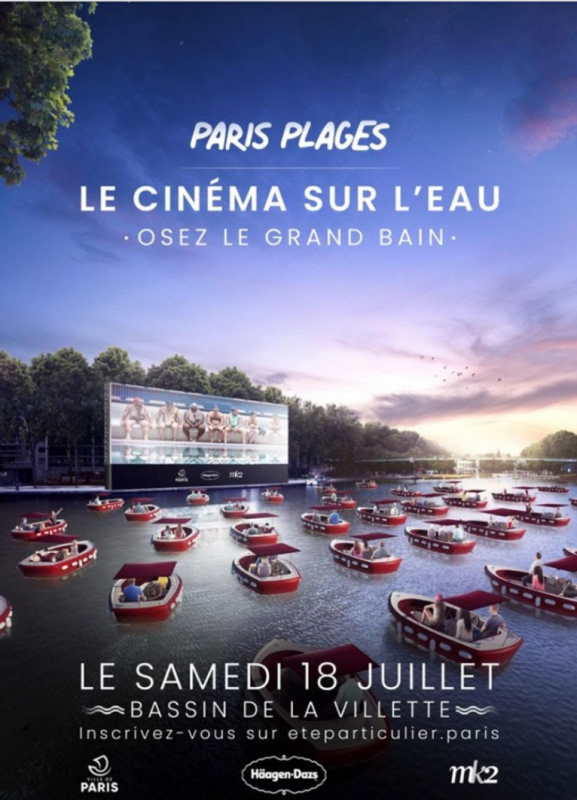Curator's Note
It started with this Tweet. Tanya had just read about “Le Cinéma sur l’Eau” — or Cinema on the Water — an event held this year on the Seine in Paris. The free screening offered patrons the chance to enter a raffle for spots on one of 38 electric boats seating two to six patrons. (Additional viewers could watch the screenings from the shore.) She was aware of screenings aboard naval ships during WWII and nontheatrical companies such as Swank Motion Pictures renting to cruise ships but what else? Watching film outdoors, specifically on a boat, struck her as a fairly novel screening formation so she took to #FilmTwitter #AcademicTwitter to ask the crowd. As the many replies came in, she learned this was far from the case. Jon’s early reply on Toronto’s Sail-In Cinema (alas, no longer active), prompted a partnership that culminates in this week’s theme: floating cinemas.
As the conversation progressed, we were interested in how this seemingly novel formation — on-the-water screenings — had a longer history. From this Twitter thread, the idea to gather the histories of film exhibition in, on, and around the water, was born.
We were particularly interested in this topic since in both of our home countries of Canada and the United States we had witnessed a resurgence in popularity of drive-in and walk-in outdoor cinemas in response to the COVID-19 pandemic. North America’s last few remaining drive-ins drove box office numbers for weeks this spring and summer, with Jurassic Park and Jaws taking the top two spots for a weekend in June. Much of this territory — along with other novel forms of cinematic experience during the pandemic — have already been given attention in In Media Res in a theme week on “Coronavirus and Cinematic Experience” curated by Nicholas Baer and Julian Hanich. But the seeming novelty of Paris’s Le Cinéma sur l’Eau motivated us to deep dive into the unique history of viewing cinema in aquatic-related contexts.
This week’s five contributors highlight specific instances of film screenings in, on, and around water from riverboats and naval ships to outdoor festivals, site-specific exhibition installations, and — as you might have guessed — screenings of Jaws on the water. Kicking the week off is Paul Moore’s history of the fraught racial politics of vaudeville and movies screened aboard showboats in the American South in the early 20th century. This is followed by Peter Lester’s account of communal screenings on Canadian naval ships during World War II. From there, we swim forward to the late 1970s with Leo Goldsmith’s meditation on artist Jon Rubin’s 30-year site specific "The Floating Cinema" project, from which we borrowed the name of this week’s theme. We finish the week with two contributions that highlight the contemporary commercial fascination with cinema on the water: Carter Moulton’s discussion of gimmicks and the history of screening Jaws on the water, and Lavinia Brydon and Olu Jenzen’s discussion of DIY and commercial screenings on piers in Britain. Together, these contributions show that Paris’s Le Cinema sur l’Eau screenings by boat is far from a unique COVID-inspired phenomenon. Rather, for as long as people have been watching movies, they’ve been finding creative ways to watch them, including in, on, and around water.
On a final note, we owe a huge thank you to everyone who responded to Tanya's original Twitter thread. The examples you provided allowed for this week to set sail!

Add new comment